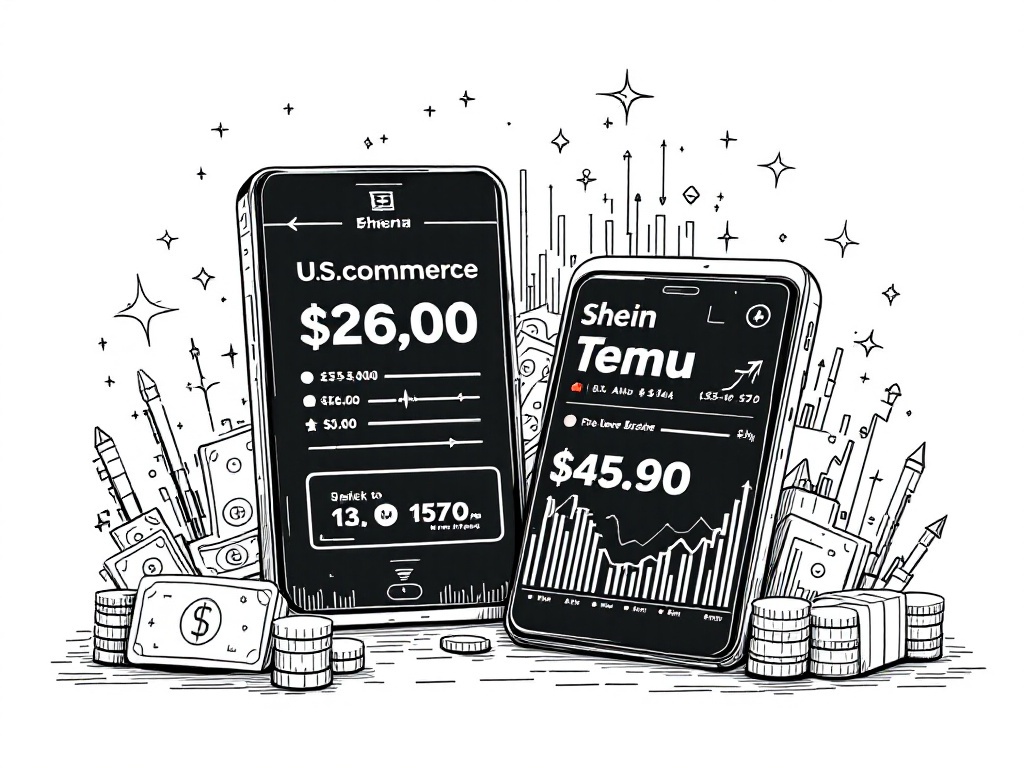Chinese E-Commerce Giants Shein and Temu Drastically Increase Prices Due to U.S. Tariffs

New York, Tuesday, 29 April 2025.
Following the imposition of new U.S. tariffs, Shein and Temu have increased U.S. prices dramatically—up to 377% for certain items—indicating potential changes in consumer behavior and market dynamics.
Impact of New Tariffs on Shein and Temu Prices
Recent U.S. government policy changes have led to significant shifts in import costs for Chinese goods, directly affecting consumer e-commerce giants Shein and Temu. These companies have been forced to increase prices by as much as 377% on several product categories, including beauty and health items and household goods, in response to the newly imposed tariffs [1][5][7]. These dramatic price increases come on the heels of a decision to end the ‘de minimis’ exemption, which previously allowed goods under $800 to enter the U.S. tariff-free [3][5]. The effects of these changes became particularly evident after the announcement that tariffs would rise to 120% of a product’s value starting May 2, 2025 [1][7].
Wider Economic Implications
These tariffs are a part of broader trade tensions between the United States and China, which have unravelled most acutely in the consumer markets of platforms like Shein and Temu. The implications of these tariffs reverberate through the U.S. retail landscape as imports from China become cost-prohibitive, impacting not only direct costs but also perceived consumer confidence and spending. Analysts forecast a shift in consumer behavior as customers react to higher prices, potentially reducing their purchasing volume [2][6]. The University of Michigan reported a drop in consumer sentiment to 52.2 in April, further indicating unease about rising costs and economic uncertainties [5].
Strategic Responses by E-Commerce Platforms
In response to these tariffs and the anticipated economic fallout, both Shein and Temu are strategizing to mitigate the impacts. Temu, for example, is employing a ‘half-custody’ approach—encouraging suppliers to ship goods in bulk to U.S. warehouses where they can be distributed without the new import charges [1][7]. Meanwhile, Shein is examining relocation options for certain supply chains to minimize dependency on Chinese imports, although not without resistance from the Chinese government [7]. As of late April 2025, both companies acknowledged the ongoing need to reassess their pricing strategies to maintain market competitiveness in light of these new challenges [4][6].
Future Outlook and Market Predictions
Looking ahead, the full extent of these tariffs on e-commerce and retail is yet to be fully realized. With inventory from existing U.S. warehouses still unaffected, there is a temporary reprieve for consumers willing to purchase remaining stocks at previous price levels [3]. As these inventories diminish, however, the new tariffs could bring about more comprehensive cost adjustments, challenging both retailers and consumers in the adaptation process [1][2]. Further developments in U.S.-China trade discussions will likely determine the long-term strategies adopted by e-commerce giants to cope with the ongoing economic landscape, including potential price stabilizations should diplomatic resolutions emerge [6][7].
Sources
- mhtntimes.com
- www.reddit.com
- fortune.com
- www.reddit.com
- www.pymnts.com
- www.bloomberg.com
- www.pymnts.com
- www.businessoffashion.com